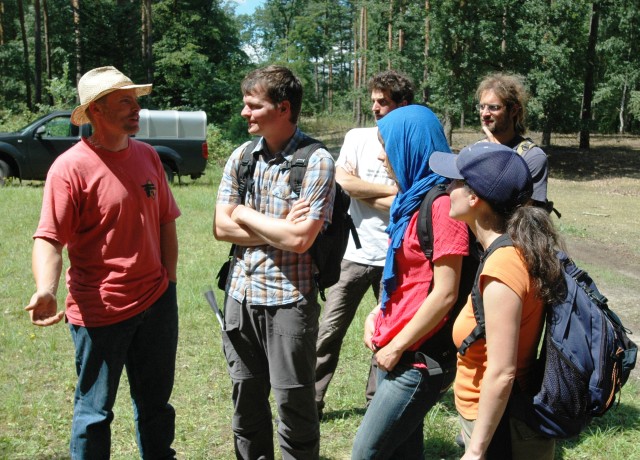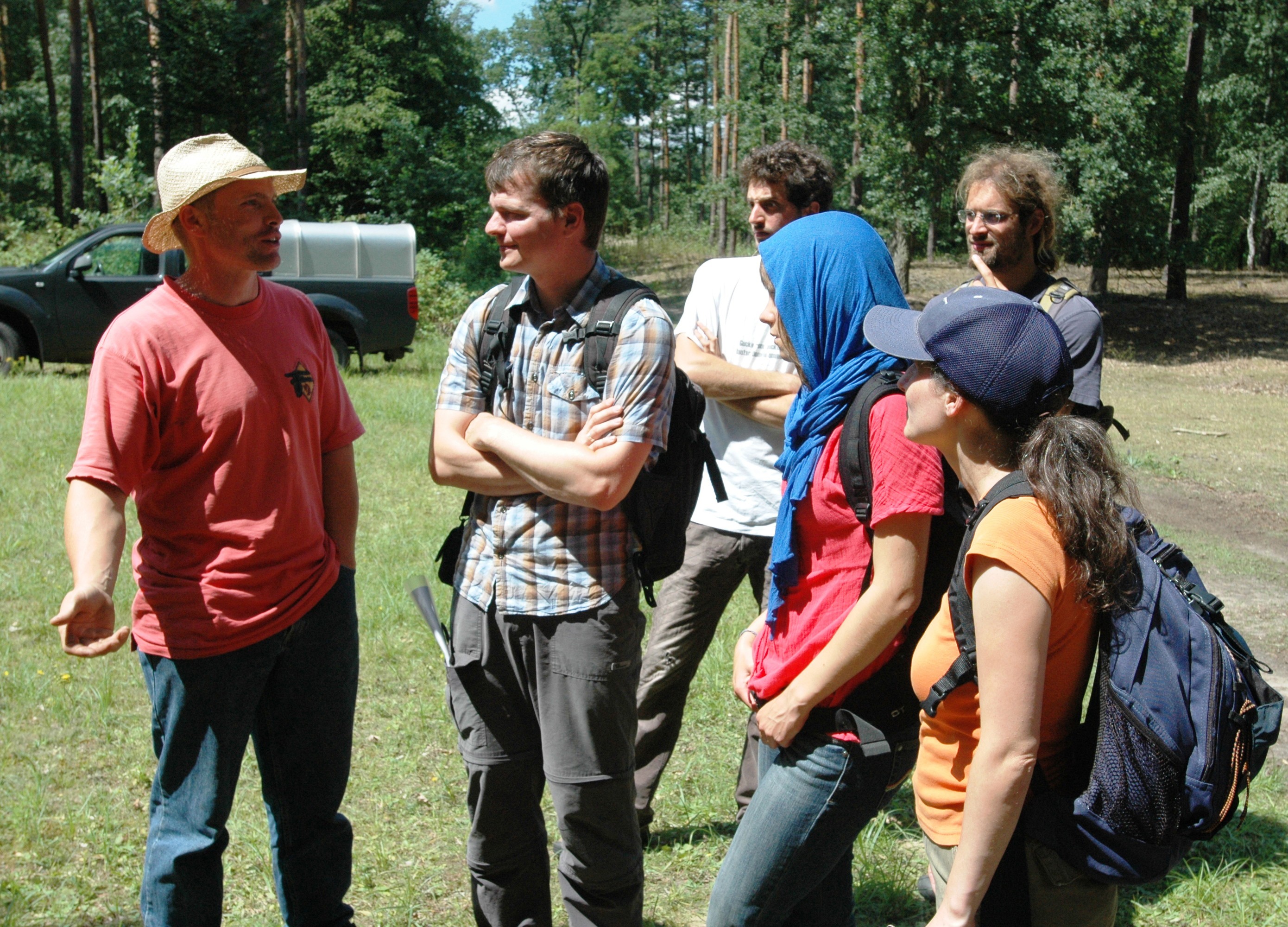HEIDELBERG, Germany -- A group of German university students got a first-hand look at the U.S. Army's stewardship of the environment at the Schwetzingen Local Training Area recently.
U.S. Army Garrison Baden-WAfA1/4rttemberg Directorate of Public Works Training Support Center Heidelberg staff and German federal and state forestry and nature protection officials briefed the 36 University of Freiburg students on the history and environmental concerns of the training area then led them on a walking tour.
The tour showed the students "the very high value" the Army places on protecting nature in its training areas, said Heinz-Ludger Henning of DPW's Environmental Division, and exposed them to the often unique biotopes - small areas with distinct environmental conditions - that many of these areas represent.
"These areas were never treated with pesticides and artificial fertilizer," said Henning, unlike nearby agricultural areas, and as a result, they became places where many rare species survived.
Military activity in the training areas also had an impact, helping create special conditions that allow small islands of certain species to prosper.
The area, Dr. Matthias Schneider of the Federal Forestry Office explained, contains ancient sand dunes formed during the last Ice Age, about 11,000-10,000 B.C. Over time, they were covered with vegetation that was destroyed when humans started to keep sheep there.
Then, during World War II, it was used by the Wehrmacht - German military - as a tank training ground, which cleared away the vegetation and exposed the sand. The U.S. Army continued to train with tracked vehicles there after the war. The result is a biotope that provides homes for many rare and protected species: plants, grasshoppers, wild bees and sand lizards, among them.
The end of tracked vehicle training around 1990 meant that plant growth began to encroach on this biotope, one of the challenges facing the Army as it continues to use the 294-acre local training area while responsibly managing its environment.
"The first ground rule is that we obey the law," Dan Welch of the Environmental Division told the students at the initial briefing, "German and American."
He said the Army cooperates with the Obere NaturschutzbehAfAPrde (Higher Nature Protection Authority) and the Federal Forestry Office (Bundesforst). The authority, among other things, hires a shepherd whose flock keeps vegetation under control, and has work groups to trim and remove vegetation in areas where the sheep are not allowed.
The area, also known as Hirschacker, is inside a water protection zone (Wasserschutzgebiet), hence the ban on vehicle maintenance.
LTA manager Joe Kelly said the LTA serves some 33 units from the Heidelberg, Mannheim and even Kaiserslautern areas. It provides bivouac sites, a land navigation course and a gas chamber.
"Local units would be lost without it," said Seth Williams of the LTA's Range Control. He said it gives them a chance to train locally year-round without having to undergo the time and expense of trips to large training centers such as GrafenwAfAPhr.
Williams said the units that train there are the least of their worries as far as the environment is concerned. He said Range Control briefs the units before they train, and that NCOs do a good job of keeping their Soldiers on track.
A greater problem is encroachment by individuals and groups who use the general area for recreation, including picnicking, mountain biking and walking their dogs. The result is trash, plant destruction and sometimes even landscape modification.
"We find mountain bike ramps," said Kelly of Range Control. "We tear them down, and they build them again."
Markus Waldmann, the shepherd contracted by the Authority, also voiced his irritation with dog owners who let their dogs run free, instead of keeping them leashed as the forest rules require.
"We had some encounters this Saturday and Sunday," Waldmann said.
"It's not just Germans," Williams of Range Control was careful to point out. "Some of the trash we find, you can tell it was bought at the PX or commissary."
The difficulty is that the LTA abuts forested areas and trails that are popular among recreation seekers. It is not fenced off, and although there are warning signs along the perimeter, they are not always visible or always heeded. With no legal jurisdiction, Army officials must call on German police when they encounter environmental violators.
Another, but non-human challenge, according to Henning, is "invasive species," mostly non-native plants whose seeds find congenial homes in the LTA's biotope, and thereby threaten its character. He said authority work crews remove the plants from time to time, but that it is a continuing challenge.
Henning said the tour of the LTA came about when the University of Freiburg asked Schneider of the Federal Forestry Office for a tour of a military training area for its students of landscape management and geography, which includes landscaping and land management.
Schneider, an alumnus of the university in the Black Forest region, selected the Schwetzingen LTA as an example of an active training area. After their visit there, Schneider led the students on a tour of a closed training area farther south in Landau-Ebenberg.
(Editor's Note: Juan R. Melendez Jr. is a public affairs specialist with the USAG Baden-WAfA1/4rttemberg.)


Social Sharing